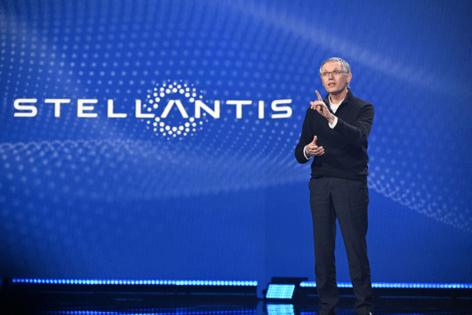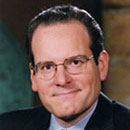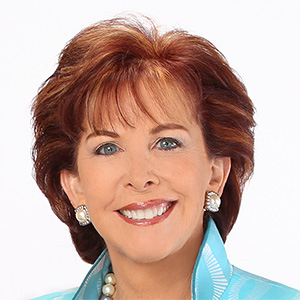Stellantis still on the hook for California EV rules, despite relief for competitors
Published in Business News
WASHINGTON — Even after lawmakers and President Donald Trump canceled California’s strictest-in-the-nation automotive emissions standards, Stellantis NV remains on the hook for electric vehicle sales requirements that will be difficult to meet.
That’s because the transatlantic automaker signed a settlement agreement in 2024 promising to comply with future Golden State policies, regardless of any “judicial or federal action” preventing its latest rules from taking effect.
The deal, inked under embattled former CEO Carlos Tavares, was made in exchange for California forgiving past regulatory compliance shortfalls, and helped avoid potentially lengthy litigation between the two sides.
But now the company behind the Jeep, Dodge and Ram brands — long known for their brawny, gas-guzzling offerings — will need to hit aggressive state milestones requiring more than half of new vehicles sold by model year 2028 to be electric. That figure rises to 68% by 2030, the final year of the settlement agreement.
That’s a tall order for any legacy automaker, and especially for EV-light Stellantis as it delays some electric offerings amid waning demand. It also comes just as the carmaker’s competition appears set to face looser regulations in the nation’s largest new vehicle market.
Both Stellantis and the California Air Resources Board said in emails to The Detroit News that they would abide by last year’s settlement. Said company spokesperson Jodi Tinson: “Stellantis continues to honor its agreement with CARB."
CARB spokesperson John Swanton provided a similar response: “Yes, the agreement remains in place, and we fully expect Stellantis to comply.” He added that CARB has been in “normal contact” with the company since Congress acted in May to revoke California’s permission to enforce its latest set of regulations.
Those regulations, known as Advanced Clean Cars II, would have required automakers in California and participating states to achieve 100% zero-emission vehicle sales for new models by 2035. The standards defined ZEVs as fully battery-electric vehicles or hydrogen fuel cell vehicles, which remain a barely available technology.
The auto industry successfully lobbied against those standards. On Thursday, President Donald Trump signed legislation blocking the U.S. Environmental Protection Agency waivers that let California set several of its own influential emissions policies.
The deal
But Stellantis, according to its agreement with California, is still subject to the rules through the 2030 model year. That means the company will need to quickly boost its electric offerings in a key state representing about 13% of the U.S. auto market.
The rules for model year 2026 — some three months away for most automakers — will require 35% ZEV sales. That number will climb to 43% the following year and 68% in 2030.
"The idea that Stellantis will have enough EVs on the market by 2030 to reach that level is a problem, because the company itself has redirected its products according to market conditions," said Sam Fiorani, vice president of the research firm AutoForecast Solutions.
"And so they'll have fewer EVs out there," he added. "But so will everybody else."
Last year, Stellantis offered only one fully electric model in the United States, the Fiat 500e, and it sold only 531 of them nationwide. At the start of this year, it began selling two more EVs: the Jeep Wagoneer S and the Dodge Charger Daytona. But those additions only brought the automaker’s total fully electric vehicle sales to about 5,000 for the first quarter, less than 2% of its overall sales.
The California standards include a partial allowance for plug-in hybrid models, and Stellantis sells lots of them — more than 103,000 nationwide in 2024. But that still only made up less than 8% of its total sales volume for the year.
The settlement agreement, notably, does not bind Stellantis to meet California's EV requirements in other states that pledged to adopt the stringent standards. The company merely committed "to put forth its best efforts to sell as many ZEVs as reasonably possible" in those states.
Stellantis agreed to the deal in the first place because it was struggling to comply with California’s prior emissions requirements. The company said it was at a competitive disadvantage because the state had previously cut more flexible emissions deals with five other automakers: Ford Motor Co., BMW AG, Honda Motor Co. Ltd., Volkswagen AG and AB Volvo.
Stellantis argued at the time, in a petition filed against CARB, that it had been excluded from seeking a similar arrangement. It also stated that the state’s stricter requirements would contribute to layoffs at two major plants in Detroit and Toledo.
The two parties eventually reached the settlement which included the company’s commitment to cut more than 10 million additional tons of greenhouse gas emissions through the 2026 model year, hitting the state’s increasingly ambitious EV milestones until 2030, participating in various EV awareness campaigns, and spending $10 million to install public chargers in parks. The automaker agreed not to “challenge or seek to undermine” the agreement.
Michael Buschbacher, a partner at the law firm Boyden Gray PLLC, said California is known for pursuing such deals: "It uses whatever levers it can to make people come and do what they want. That's their classic M.O."
Extra credits?
The deal essentially helped Stellantis get a more favorable short-term compliance path in California for greenhouse gas emissions, similar to the five other automakers who had reached framework agreements several years earlier, said Dan Sperling, a professor of civil engineering and environmental science and policy.
Sperling teaches at the University of California, Davis and is a former member of CARB. He said the deal helped Stellantis avoid buying large amounts of zero-emission vehicle credits, which then-CEO Tavares didn’t want to do any longer. But in return, the automaker agreed to comply in advance with future regulations.
"They got a short-term great deal, but now they’re in an awkward situation," Sperling said of Stellantis.
It is unclear whether Stellantis will be able to purchase credits to meet its obligations in California, a common practice among automakers to meet federal and state targets.
"I think that without ACC II being enforced, the credit model probably does go away," said David Pettit, a California-based attorney and clean transportation advocate at the Center for Biological Diversity.
He continued: "They'd need to, I guess, open up the dispute resolution mechanism in the deal and go to CARB and say, 'Hey, what are we supposed to do? We'd like to acquire some more credits, but the market has gone away. No fault of ours."
If California does allow credit trading, the solution could be inexpensive for Stellantis thanks to a credit market collapse.
Buschbacher, who represents clients seeking to block pro-EV regulations, said that manufacturers who previously accrued credits with the state will have no other use for them.
"They are basically going to be worthless, except for potentially selling them to people like Stellantis," he said. "It's a complicated situation. But I suspect that there's enough out there that Stellantis can probably pay its way to this without changing its behavior too much."
What comes next
Stellantis dealers in the Golden State are figuring out their next move, now that they could face a competitive disadvantage against other brands.
Sean Hogan, the vice president of Sierra Auto Group in Southern California, which includes Chrysler, Dodge, Jeep and Ram stores, said dealers didn't initially realize what was in the contract after it was signed. The automaker's top brass at the time portrayed it as a big win. But once they looked over the details, he said, the retailers realized "it was not a great thing."
"We're all nervous," he said of Stellantis dealers in the state. "If it doesn't get resolved, then business could be very difficult for us, and the consumer."
Hogan said he doesn't see Stellantis meeting CARB's EV sales milestones in the coming years in large part because charging infrastructure still isn't sufficient in certain areas. EVs, he noted, still seem to sell mostly to people who are wealthier and own their homes.
California, according to the climate attorney Pettit, will have discretion over how strongly it pursues regulatory compliance from the company. He also suggested that Stellantis will not be able to evade the contract.
"No," he said. "That's a rare direct answer from a lawyer. If they don't meet the goals, then CARB can sue them in state court in California."
Democratic Gov. Gavin Newsom, for his part, has said he will vigorously defend California's ability to set tailpipe emission standards.
He signed an executive action on June 12 affirming the state's commitment to ZEV adoption, directing CARB to maintain public data about automakers that most faithfully follow the now-defunct ACC II rules, and ordering the regulator to develop next-generation ACC III standards for the future.
“We won’t let this illegal action by Trump and Republicans in the pockets of polluters stand in the way of commonsense policy to clean our air, protect the health of our kids and compete on the global stage," the governor said. "I’m signing an executive order to keep California on track with our world-leading transition to cleaner cars.”
But Buschbacher, who was influential in promoting that action, was more bullish on Stellantis being able to reap the rewards of regulatory rollbacks in Washington.
"It sure seems to me like California is attempting to enforce a standard for which it doesn't have a waiver," he said of the agreement. "And the Clean Air Act says you can't do that. It's very explicit about that."
For now, the situation remains in flux for a company that has lagged behind crosstown competitors on EVs and sought a quick solution to regulatory woes.
Sperling, the former CARB member, summarized Stellantis' position: "They doubled down on risk."
©2025 www.detroitnews.com. Visit at detroitnews.com. Distributed by Tribune Content Agency, LLC.












Comments